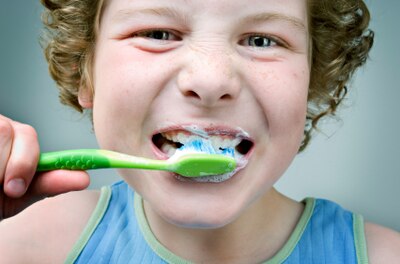Q. I just brought my 4-year-old son in for his first dental visit. We’ve been pretty good about brushing his teeth at least once a day. And he doesn’t eat a lot of sweets. He had five cavities! What can we do to make sure this doesn’t happen again?
A. It can be tough on parents of young children when they bring their child to the dentist only to learn that they already have a cavity. As a dentist I often have to pass this not-so-good news on to parents. I remind them that it doesn’t mean they’re a bad parent, they just have to learn the tools and skills to prevent cavities. I tell them not to look back, but to look forward and see how we can prevent their child from getting more cavities in the future. You can hit the reset button to get back on track with good oral health habits anytime.

In order to understand how it’s possible that cavities are nearly 100 percent preventable, let’s go back to how they start in the first place. Bacteria in the mouth called Streptococcus Mutans (MS), is primarily responsible for cavities. This bacteria colonizes and grows in everyone’s mouth at some point and it is usually acquired from a caregiver as an infant.
Getting exposed to the MS bacteria is the first turning point in children’s oral health. The bacteria is transferred from a caregiver, usually mom, via the sharing of utensils or cups, or transfer of saliva. The goal is to delay the transmission of the bacteria as long as possible. So how do we do that? First, it’s helpful if caregivers have clean healthy mouths themselves which includes regular visits to the dentist, daily flossing and twice daily brushing. Second, before your baby has any teeth, clean your infant’s mouth by wiping the gums, cheeks and tongue with a clean wet cloth after feedings. This super simple trick wipes bacteria away from the areas where little teeth are soon to appear.
Even if we follow these steps with strict diligence, at some point, baby is going to get the MS bacteria in his or her mouth. So is it a lost cause at that point? Time to throw in the towel? Absolutely not! Twice daily brushing, starting with that first little tooth, is what keeps the colonization of the MS bacteria to a minimum. When that first tooth comes in, brushing your baby’s teeth with a small toothbrush and a small amount of toothpaste with fluoride (about the size of a grain of rice) will help keep baby’s mouth clean.
As children grow, other factors come in to play more, like eating and drinking habits. The process of forming a cavity requires both the MS bacteria and fermentable carbohydrates and sugars found in foods. That means that when we eat high sugar or carbohydrate rich foods, and let them sit on our teeth for long periods of time, the bacteria metabolizes these sugars and releases an acid by-product that damages teeth and leads to cavities.
Two factors exacerbate this process: eating continually throughout the day without giving your mouth a break, and not brushing twice daily and flossing. The reason eating continually can cause a problem is that it doesn’t allow the saliva in our mouths to go to work neutralizing the acid released by the bacteria. This is our natural cavity prevention mechanism that cannot work properly if we are constantly snacking. That’s why giving your mouth a break and only giving your child three meals and two snacks (mid-morning and mid-afternoon) will help prevent cavities. Your mouth needs a break to allow the saliva to work its magic to restore the pH and prevent cavities. When we brush and floss, we remove the carbohydrates and sugars from our teeth and gums, and reduce the MS bacteria’s opportunity to metabolize them and produce cavity causing acids.
So, let’s say your 4-year-old has a couple cavities. What can you do to hit the reset button? Get the cavities treated by the dentist, maintain regular cleanings and check-ups, and then stick with good habits at home throughout the year. This way when you come to see the dentist everyone will be happy to get the news: NO CAVITIES!
About our First Person series:
First Person is where Chalkbeat features personal essays by educators, students, parents, and others trying to improve public education. Read our submission guidelines here.
